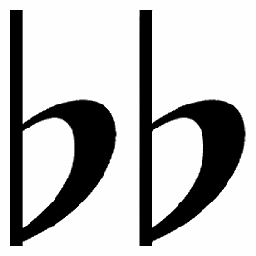
Determining the Key
After the clef and time signature comes the key signature which indicates the key or pitch range of the scaling system for the appropriate instrument with a series of sharp or flat signs. Referring to the staff image below, you can see that two augmented or sharp notes will be used in this example. Depending upon the key, the key signature could contain one or many sharp or flat key marks. See also Enharmonic & Diatonic for key breakdown, assignment, and reference.

Key Marks & Accidentals
Key Marks, also called Accidentals or Key Symbols are placed next to the note when changing its pitch during the composition. The natural key symbol is never used in the key signature. Illustrated below are the key marks.

The natural sign is used as an accidental during the composition to change a sharp or flat note back to its natural pitch.

The demi-sharp sign is used as an accidental during a composition to augment the pitch of a note by one-quarter step.

The sharp sign is used in the key signature to indicate which notes are sharp in the composition as well as the key of the instrument used for the music. The sharp sign is used as an accidental during a composition to augment the pitch of a note by one-half step.

The double-sharp sign is used as an accidental during a composition to augment the pitch of a note by one step.

The sesquisharp or sharp-and-a-half sign is used as an accidental during a composition to increase the pitch of a note by three quarter-steps.

The demiflat sign is used as an accidental during a composition to diminish the pitch of a note by one-quarter step.

The flat sign is used in the key signature to indicate which notes are flat in the composition as well as the key of the instrument used for the music. The flat sign is used as an accidental during a composition to diminish a note's pitch by one-half step.

The double-flat sign is used as an accidental during a composition to diminish the pitch of a note by one step.


The sesquiflat or flat-and-a-half sign is used as an accidental during a composition to diminish the pitch of a note by three quarter-steps. A slashed double-flat is also used as a flat-and-a-half sign.


